Synthmaster 3 Review
- October 16, 2024
- by Steve Castellano
- Product Intelligence Report

I’m playing with KV331 Audio’s flagship synth plugin for the first time on the occasion of its version 3 release, and it’s clear I’ve got a lot of catching up to do. This upgrade has added granular and VA oscillator types to the mix plus a new waveshaping module, which means SynthMaster 3 covers pretty much every type of synthesis I’ve come across, including additive, vector, wavetable and sample playback. Also new is the modular architecture that lets you create up to 16 layers per patch (up from 2 in the previous version), with each layer containing up to 16 oscillators or modulators, a step sequencer, and an arpeggiator.
That’s a whole lot of synthesis power to wrap your head around in a single plugin. But have no fear, if the programming options seem overwhelming at first you’ve got 900 new patches to explore, and SynthMaster 3 is backward-compatible with previous versions, so most of the existing patch library can be imported as well. Previewing sounds in the preset browser page is now as easy as it gets – simply mouse over the play button icon in the preset list to audition a patch without even loading it first.
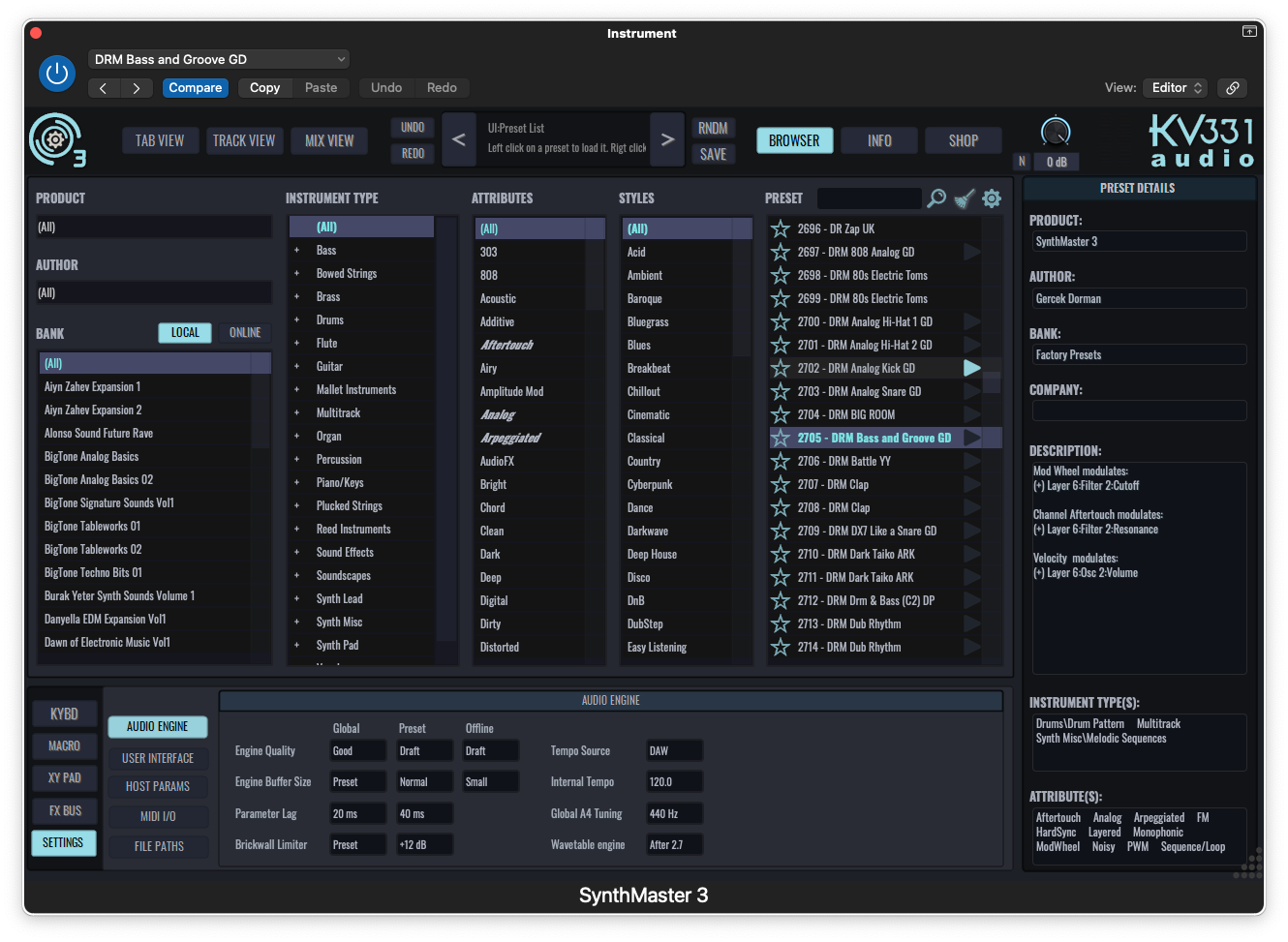
Oscillator recap
The Oscillator Module, familiar from the previous version, is where a lot of SynthMaster 3’s power is hidden. Most synths would simply give you a list of oscillators to choose from, particularly in the “basic oscillator” category. Of course you can find your basic sawtooth, triangle, sine and so forth here. But you can also find five different kinds of noise. Plus 8 more sampled noise options. And then you come across the “single-cycle waveforms” menu and discover folder upon folder of waveforms based on instruments from the Arp 2600 to the Yamaha CS80. You’ll also find a library of multisamples and loops.
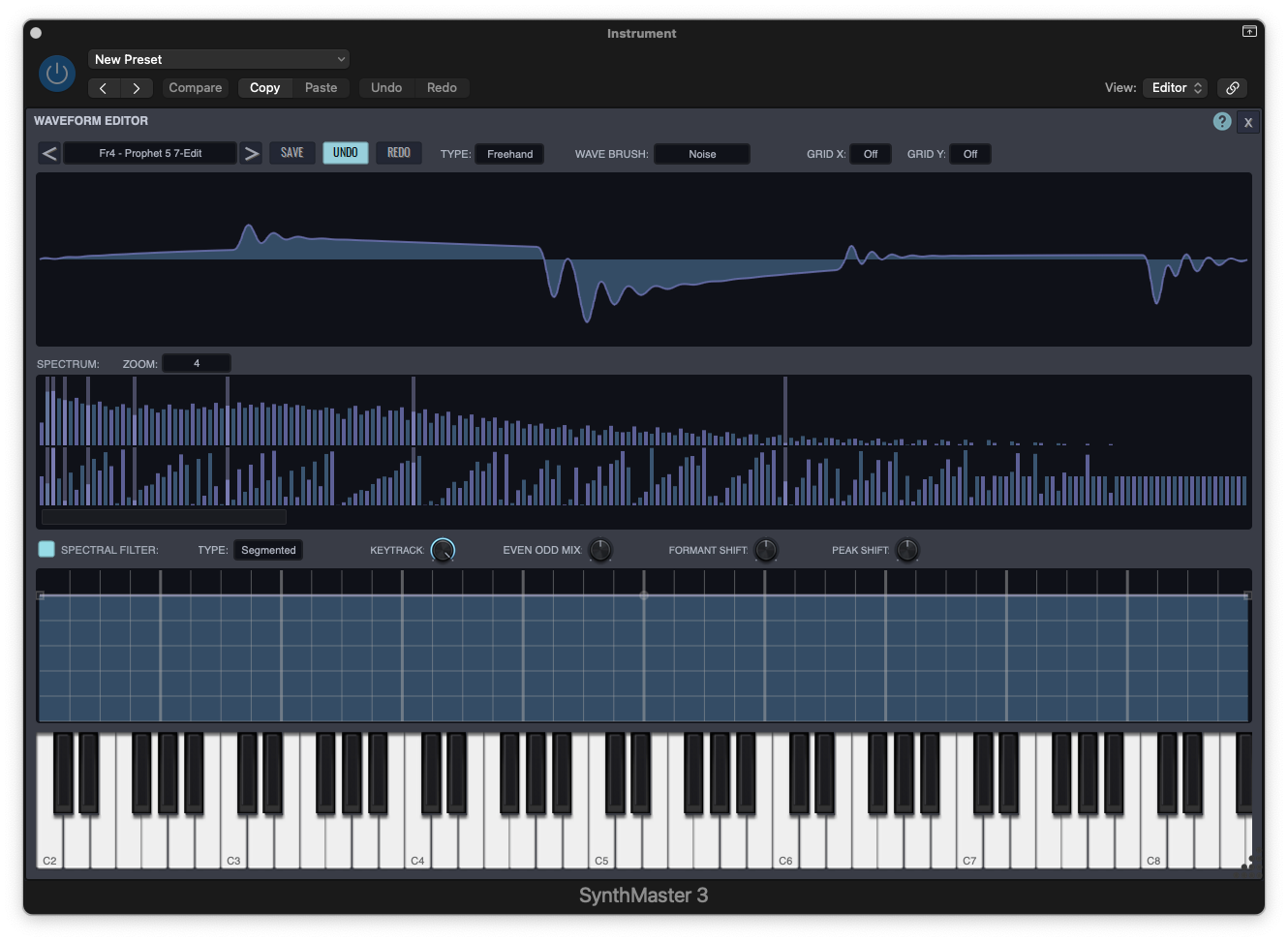
If you’d rather take matters into your own hands, you can use the Waveform Editor to draw your own and manipulate its spectrum using filters or by singling out individual harmonics. In fact, you now have full, in-depth editing for multisamples and wavetables, as well as the ability to convert other oscillator types into wavetables, to save, edit further, or even export.
Once we’ve backed out of that rabbit hole, we can play around with the shaping algorithm, which includes various filter options (we’re still in the oscillator module, remember), bending modes, sync, pulse width modulation, and bit crushing. Further emulate your favourite vintage synth with the drift control, which simulates the instability of old-school oscillators. Now jump into the Voices menu, where you can double, triple, or multiply that oscillator into 16 unison oscillators, with detune, pan, phase and tone spread options for extra thickness.
Waveshaper and Filter modes
SynthMaster 3 adds a few new sound sculpting tools to your sound design arsenal in the filter section. The Waveshaper is a completely new module which offers a variety of wavefolding, rectifying, and bitcrushing options, each fully automatable from any modulation source.
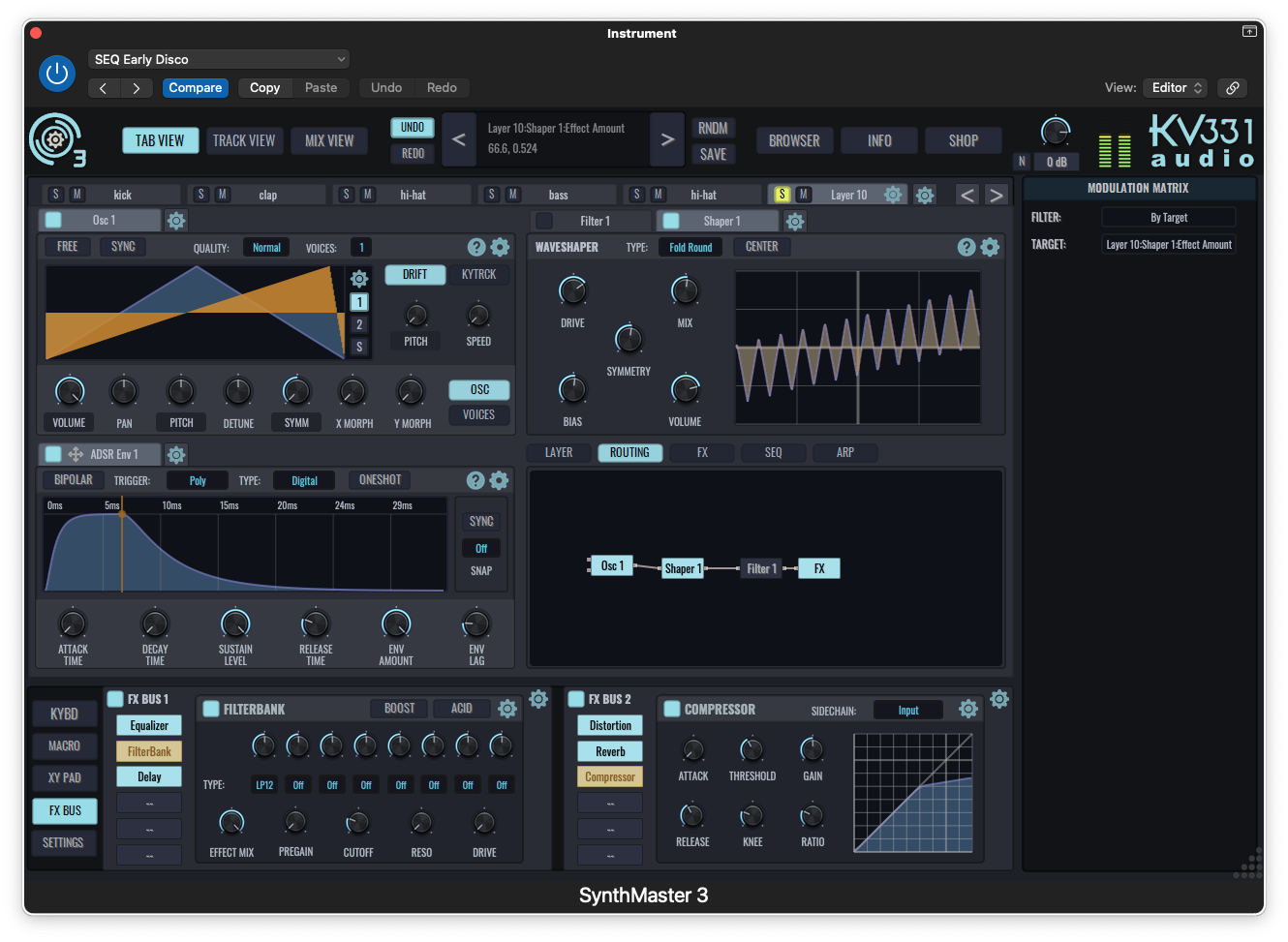
The Formant Filter adds five vowel sounds in five vocal ranges, from bass to soprano including countertenor, to give your sounds an unmistakable vocal quality. Two formant slots, initial and final, let you morph between two settings, again fully automatable through envelopes, LFOs, or a modulator of your choice.
The Phaser Filter is an interesting and flexible alternative to the Phaser effect, in that it acts per note rather than on the summed output. You have much finer control here than on most standard effect pedals too. I had a lot of fun experimenting witn non-standard modulation waveforms, particularly the stepped random options.
Getting granular
The new granular oscillator is an interesting and effective way to create ambient soundscapes or glitchy, otherworldly effects from just about any sample. You can choose from the list of samples and multisamples, or you can grab an audio file off a local drive and drag it into the granular oscillator window (it seems to like wav files but not aiffs). This is a great way to bring new life into those folders full of sample packs that litter my audio drives. Right-click on a SynthMaster knob to assign your favourite MIDI controller to Position, Length, and Density, and have some fun.
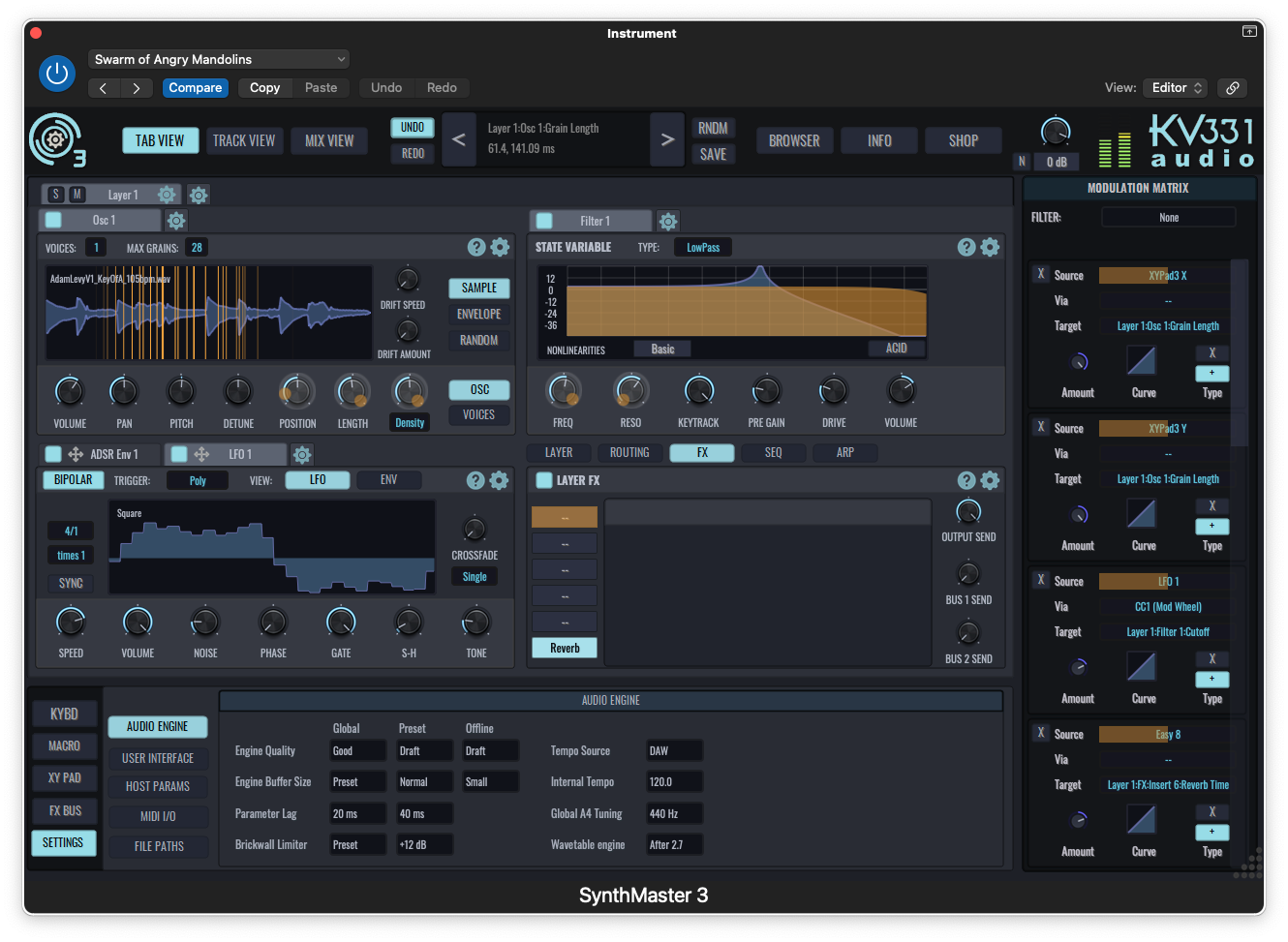
I have to admit that I don’t always know what to do with a granular oscillator, but flipping through SynthMaster 3’s granular presets was an eye-opener – the possibilities really open up when it’s used as an additional texture in a multi-layered pad or effect. In my experimentation I noticed that the RNDM button in the preset browser respects your attribute selections. Select Granular in the Attributes menu and RNDM will select random granular patches.
Virtual Analog (VAnalog) Oscillators
KV331 has really pulled out all the stops when it comes to analogue emulation, down to the smallest details like oscillator drift and multiple voice allocation modes. SynthMaster 3 introduces a new VAnalog Oscillator which renders waveforms by drawing them point to point in real time rather than calling up stored single cycle waveforms. This allows for higher resolution waveforms at lower frequencies compared to the basic oscillators.
You can draw your own waveforms right in the main VAnalog waveform window, or call up preset waves drawn from a variety of analogue synths including the Andromeda, Juno 106, SH-101, MS-20 and Sub Phatty. The VAnalog Oscillator actually has three waveform slots, and creates motion by morphing between them in various ways. Any of the various modulators can be assigned to the oscillator parameters (as with pretty much any parameter in the interface), envelopes, LFOs, MIDI, MPE and more.
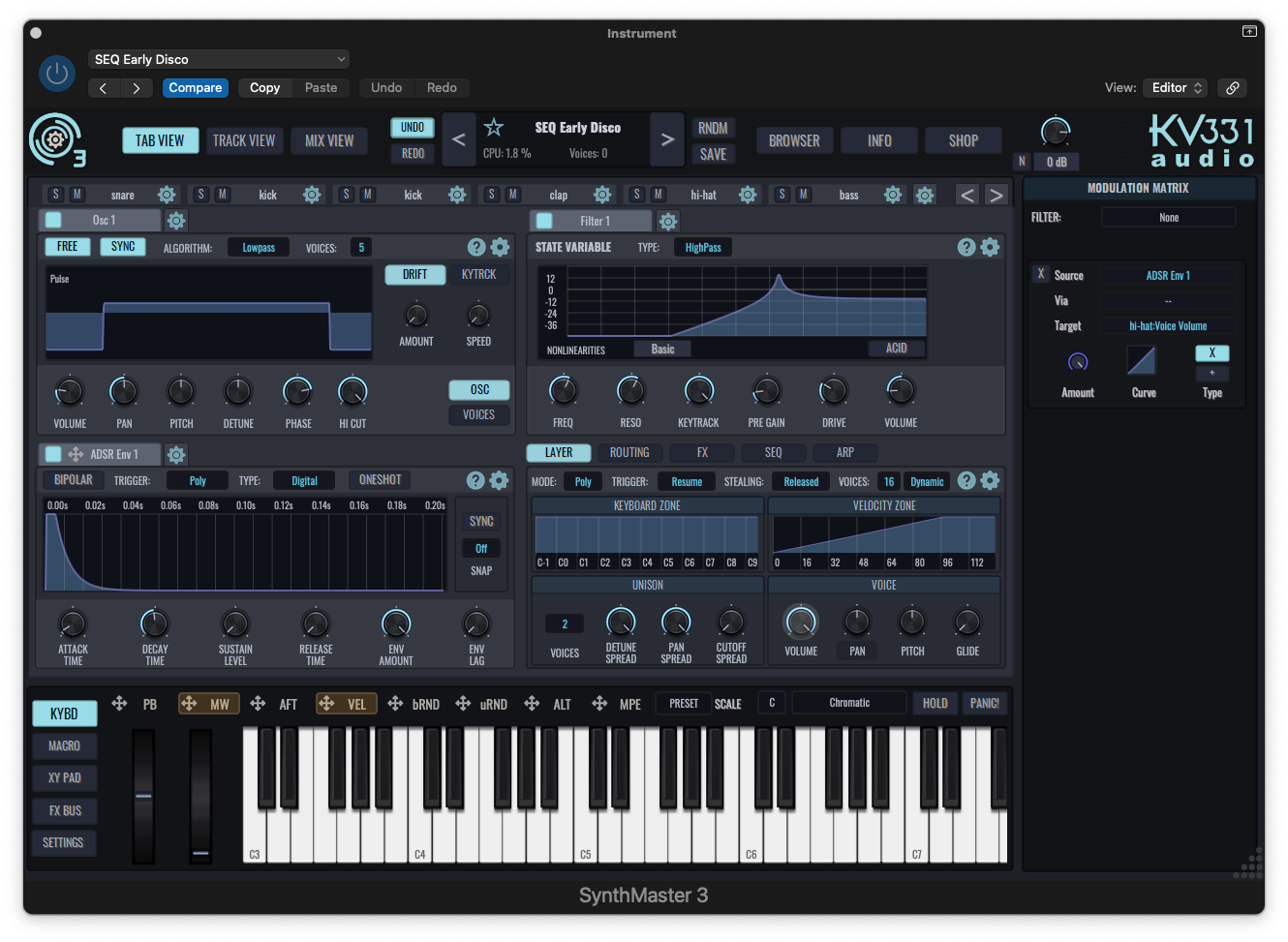
The multi-layered approach
If you’re familiar with SynthMaster 2 you’ll notice that some things have been reorganized to keep the interface manageable and intuitive with the addition of SynthMaster 3’s new features. They’ve kept the 4-quadrant layout, though the lower right quadrant now includes a “Layer” tab where you can set per-layer keyboard and velocity zones. Below the main browser navigation bar you’ll now see tabs for organizing up to 16 layers, each with their own solo and mute buttons for ease of programming.
Also new is the Track View, which allows you to view the Sequence, Arpeggiator, Voice or Zone settings for up to 4 layers simultaneously. This view is essential for putting the finishing touches on your multi-layered performance patch or groovebox arrangement. Next to this we have the Mix View, where you have a mixing-console style display to assign up to 6 effects per layer and two FX busses.
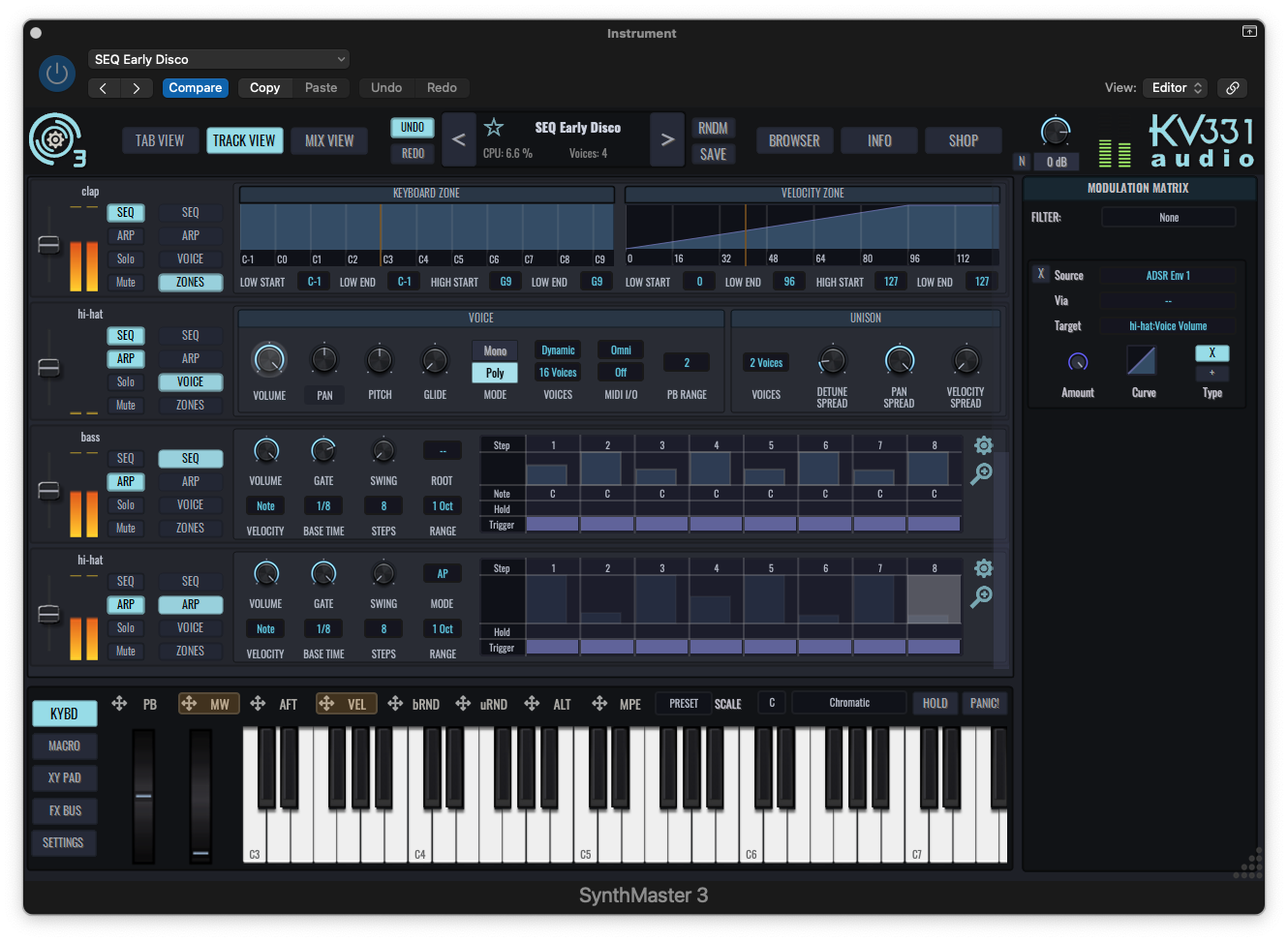
Conclusions
I’ve been exploring SynthMaster 3 for a while now and still feel like I’ve barely scratched the surface. It’s a phenomenally powerful synth that lets you edit waveforms under a microscope and then go on to stack your patches hundreds of virtual oscillators deep if that’s what you’re into. The developers have even been thoughtful enough to include starter patches for all 32 original DX7 algorithms if you’re a fan of that classic FM vibe. The overall sound quality is excellent, and you have five audio engine quality settings to choose from if you’re concerned about CPU load.
With great power comes great complexity of course, and there are some concepts that I have yet to fully grasp, including the spectral implications of some of the bend modes offered in the oscillator algorithms, as well as the optimal applications for some of the 12 new waveshaper settings. But I appreciate that KV331 hasn’t chosen to limit my options to what they think I might understand. To this end, a comprehensive manual would be handy. As it stands, contextual help menus link to online video tutorials presented by the developers themselves. It’s a synth you could get lost in, but help is never far away.
Latest Music Software Reviews
Author

Steve Castellano
Steve Castellano is a musician and writer living in Toronto, Canada. He holds a music degree from York University, where his focus was electronic music and composition. He currently records and performs modular electronic music under the name Elettronica Sperimentale.